|
News Archive: Oct. 1-31 |

|
Hubble reveals possible new moons around Pluto
Using NASA's Hubble Space Telescope to probe the ninth planet in our solar system, astronomers discovered that Pluto may have not one, but three moons. The planet resides 3 billion miles from the sun in the heart of the Kuiper Belt.
 FULL STORY FULL STORY
 |  |
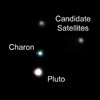
|
 |
Iceball among snowballs
The moon Enceladus seems to hover above the outer reaches of Saturn's B ring. Below and to the right of Enceladus, four faint bands lie in the center of the dark Cassini Division. Recently, scientists have speculated that the particles that make up the dense B and A rings might be more like fluffy snowballs than hard ice cubes, based on data from the Cassini spacecraft.
 FULL STORY FULL STORY
 |  |
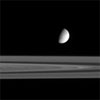
|
 |
Power system glitch halts European satellite mission
After being launched into orbit last Thursday, a tiny European spacecraft built by students fell silent Friday morning and officials aren't sure if the mission can be recovered.
 FULL STORY FULL STORY
 |  |
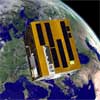
|
 |
Dione's canyonlands
The Cassini spacecraft views the far-off wispy canyons of Saturn's moon Dione and sees an interesting dichotomy between the bright wisps and the bright south polar region at the bottom.
 FULL STORY FULL STORY
 |  |
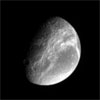
|
 |
OTHER HEADLINES Additional stories today
|
 |
European space station robotic arm to launch on Proton -- The European Space Agency has signed a contract for the launch preparations and first operations of the European Robotic Arm on the International Space Station. Originally, the arm was scheduled for launch on a space shuttle, together with the Russian Science and Power Platform, which was intended to become its home base for operations on the station.

Contracts prepare for next weather satellite series -- NOAA announced that it has awarded contracts to Lockheed Martin, Boeing and Northrop Grumman. Each contract, valued at $10 million, will obtain program definition and risk reduction studies for NOAA's future series of Geostationary Operational Environmental Satellites R-series Program (GOES-R).
|
 |
Spitzer finds black widow nebula hiding in the dust
In this Spitzer image, the two opposing bubbles are being formed in opposite directions by the powerful outflows from massive groups of forming stars. The baby stars can be seen as specks of yellow where the two bubbles overlap.
 FULL STORY FULL STORY
 |  |
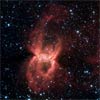
|
 |
NASA software zooms to nearly anywhere on moon
Internet users can now take virtual 3-D trips to nearly anyplace on the moon, thanks to a NASA program first designed to show aerial views of the Earth.
 FULL STORY FULL STORY
 |  |
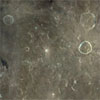
|
 |
A SWIRE picture is worth billions of years
These spectacular images, taken by the Spitzer Wide-area Infrared Extragalactic (SWIRE) Legacy project, encapsulate one of the primary objectives of the Spitzer mission: to connect the evolution of galaxies from the distant, or early, universe to the nearby, or present day, universe.
 FULL STORY FULL STORY
 |  |
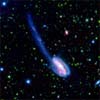
|
 |
Most powerful single telescope takes first images
The Large Binocular Telescope (LBT) partners in the U.S., Italy and Germany announced that they have achieved "First Light." The LBT will peer deeper into space than ever before, and with ten times the clarity of the Hubble Space Telescope.
 FULL STORY FULL STORY
 |  |
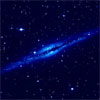
|
 |
Russian rocket launches batch of tiny satellites
An international cluster of diminutive spacecraft from at least seven nations - including Iran - rode a Russian Kosmos rocket into space Thursday morning. The successful launch comes on the heels of a month of Russian space troubles.
 FULL STORY FULL STORY
 |  |
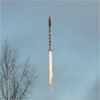
|
 |
Boeing's rocket schedule hit by looming union strike
Boeing aerospace workers across the country are preparing to strike next week, a move that would halt the company's Delta rocket launch schedule at Cape Canaveral and Vandenberg Air Force Base.
 FULL STORY FULL STORY
 |  |
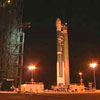
|
 |
Cassini finds Prometheus a sculptor of Saturn's rings
New findings from members of the Cassini imaging team show that certain prominent features in Saturn's narrow and contorted F ring can be understood in terms of a simple gravitational interaction with the small moon Prometheus. The results are published in this week's issue of the journal "Nature."
 FULL STORY FULL STORY
 |  |
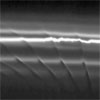
|
 |
NASA successfully tests space shuttle main engine
For the first time since Hurricane Katrina, NASA's Stennis Space Center in Mississippi returned to its primary business Tuesday, testing space shuttle main engines. Engineers successfully test-fired an engine for 520 seconds; the time it takes a shuttle to reach orbit.
 FULL STORY FULL STORY
 |  |
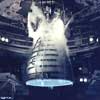
|
 |
Confusing perspective of Saturn's moons from Cassini
The Saturn moon Mimas is much smaller than Rhea, but the geometry of this scene from the Cassini spacecraft exaggerates the actual differences in size. Here, Mimas is on the opposite side of the rings from Rhea and Cassini.
 FULL STORY FULL STORY
 |  |
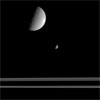
|
 |
Cape recovers from Wilma
NASA's Kennedy Space Center appeared to weather Hurricane Wilma with only minor damage being sustained to some buildings, officials said late Monday, just hours after heavy rain and gusty winds blew through the Florida spaceport. The center is remaining closed today while the full damage assessment team performs comprehensive inspections of facilities and workers restore power and phone service to some locations.
 TUESDAY UPDATE TUESDAY UPDATE
 |  |
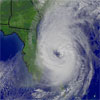
|
 |
Improved deep-space transmission systems
Recent advances in wireless computing technology could improve deep-space missions like asteroid research and remote spacecraft operations by changing the way signals are sent from Earth.
 FULL STORY FULL STORY
 |  |
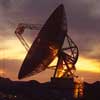
|
 |
Space station experiment 'suitcases' back on Earth
After spending almost four years in space, suitcases full of valuable experiments were returned to the anxious researchers awaiting the arrival. Earlier this month, two Materials International Space Station Experiment (MISSE) passive experiment containers were opened for the first time since arriving back on Earth from their prolonged stay in space.
 FULL STORY FULL STORY
 |  |
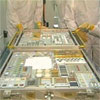
|
 |
OTHER HEADLINES Additional stories today
|
 |
NASA names aeronautics associate administrator -- NASA Administrator Michael Griffin has named veteran scientist Lisa J. Porter as associate administrator for the Aeronautics Mission Directorate. She will lead the agency's aeronautics research efforts and continue to lead NASA's efforts in the development of national aeronautics policy in cooperation with other government agencies.
|
 |
Tribute to Titan:
Gallery of the final launch
This collection of photos shows the final Titan rocket being launched into space, concluding five decades of service. The booster lifted off last week from California's Vandenberg Air Force Base.
 ENTER GALLERY ENTER GALLERY
 NEW ADDITIONS! NEW ADDITIONS!
 |  |
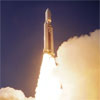
|
 |
News from a space phantom
A phantom, which was outside the International Space Station for a year and a half, is now inside with the resident crew. However, this is no ghost story but a serious set of scientific experiments to monitor radiation levels inside and outside the ISS.
 FULL STORY FULL STORY
 |  |

|
 |
Drawing the drapes at Saturn's moon Prometheus
Prometheus poses here with its latest creation: a dark, diagonal gore in the tenuous material interior to Saturn's F ring. The shepherd moon creates a new gore each time it comes closest to the F ring in its orbit of Saturn, and the memory of previous passes is preserved in the rings's structure for some time afterward.
 FULL STORY FULL STORY
 |  |

|
 |
Scientists studying the ground beneath Mars rovers
When it comes to longevity, the Spirit and Opportunity rovers on Mars are giving some real competition to the pink bunny from those battery advertisements. The two rovers in a couple of months will celebrate their second anniversary on the red planet, even though their original missions were only 90 days.
 FULL STORY FULL STORY
 |  |
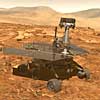
|
 |
Cracks or cryovolcanoes make clouds on Titan
Like the little engine that could, geologic activity on the surface of Saturn's moon Titan -- maybe outgassing cracks and perhaps icy cryovolcanoes -- is belching puffs of methane gas into the atmosphere of the moon, creating clouds.
 FULL STORY FULL STORY
 |  |
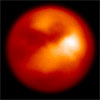
|
 |
Failed stars may succeed in planet business
NASA's Spitzer Space Telescope has spotted the very beginnings of what might become planets around the puniest of celestial orbs - brown dwarfs, or "failed stars."
 FULL STORY FULL STORY
 |  |
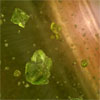
|
 |
In the groove at Dione
The Cassini spacecraft continues to prove that the closer the view of the myriad worlds constituting the Saturn system, the more interesting and varied the views become. This close-up view of icy Dione reveals a wonderful variety of surface features that are simultaneously familiar and unlike any other place in the solar system.
 FULL STORY FULL STORY
 |  |
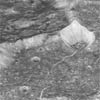
|
 |
Goodbye, Titan
The mighty Titan -- a pillar in American rocketry for five decades -- flew into orbit for the final time Wednesday, capping a distinguished career of heavy-lifting that has spanned the nation's space age.
 FULL STORY FULL STORY
 MISSION STATUS CENTER MISSION STATUS CENTER
 HISTORY: TITAN THROUGH THE DECADES HISTORY: TITAN THROUGH THE DECADES
 |  |
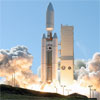
|
 |

Additional coverage for subscribers:
 VIDEO:
WEDNESDAY'S TITAN ROCKET LAUNCH QT VIDEO:
WEDNESDAY'S TITAN ROCKET LAUNCH QT
 VIDEO:
LAUNCH PAD CAMERA VIEW OF LIFTOFF QT VIDEO:
LAUNCH PAD CAMERA VIEW OF LIFTOFF QT
 VIDEO:
INFRARED CAMERA CAPTURES LIFTOFF QT VIDEO:
INFRARED CAMERA CAPTURES LIFTOFF QT
 VIDEO:
POWERFUL TRACKING CAMERA QT VIDEO:
POWERFUL TRACKING CAMERA QT

 VIDEO:
FOOTAGE OF PAST TITAN LAUNCHES FROM 1950S TO TODAY QT VIDEO:
FOOTAGE OF PAST TITAN LAUNCHES FROM 1950S TO TODAY QT
 VIDEO:
THE CAPE'S LAST TITAN 4 ROCKET BLASTS OFF QT VIDEO:
THE CAPE'S LAST TITAN 4 ROCKET BLASTS OFF QT
 SUBSCRIBE NOW SUBSCRIBE NOW

|
Hubble examines the moon in search for resources
NASA is using the unique capabilities of the Hubble Space Telescope for a new class of scientific observations of the Earth's moon. The telescope is searching for important oxygen-bearing minerals, which may be critical for a sustained human lunar presence.
 FULL STORY FULL STORY
 |  |
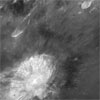
|
 |

Additional coverage for subscribers:
 VIDEO:
WATCH WEDNESDAY'S SCIENCE NEWS BRIEFING: VIDEO:
WATCH WEDNESDAY'S SCIENCE NEWS BRIEFING:
DIAL-UP 1 | DIAL-UP 2
BROADBAND 1 | BROADBAND 2
 SUBSCRIBE NOW SUBSCRIBE NOW

|
Ringside with Dione
Sitting in the tranquility of space is the pale moon Dione, looking as if it's posing for a painter. The moon is set against the stunning backdrop of Saturn, adorned in gold and draped with hues of blue. During the Cassini spacecraft's only close flyby of the grayish moon, the spacecraft came within 310 miles of the surface.
 FULL STORY FULL STORY
 |  |
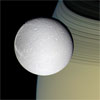
|
 |
Icy crescent of Dione
As it departed its encounter with Saturn's moon Dione, Cassini sailed above an unreal landscape blasted by impacts. The rising Sun throws craters into sharp contrast and reveals steep crater walls. At the far right, a medium-sized crater is bisected by a fracture, revealing a cross section of the impact site.
 FULL STORY FULL STORY
 |  |
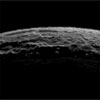
|
 |
Map gives more evidence Mars once like Earth
NASA scientists have discovered additional evidence that Mars once underwent plate tectonics, slow movement of the planet's crust, like the present-day Earth. A new map of Mars' magnetic field made by the Mars Global Surveyor spacecraft reveals a world whose history was shaped by great crustal plates being pulled apart or smashed together.
 FULL STORY FULL STORY
 |  |
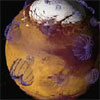
|
 |
Future 'smart' space missions will be multi-tiered
Remote-sensing orbiters, probes, landers and rovers are returning astonishing discoveries about our solar system. But some of the most exciting geological and potentially astrobiological places in our family of planets and moons are dangerous and difficult to explore.
 FULL STORY FULL STORY
 |  |
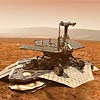
|
 |
Chinese astronauts return from space
Returning home to a hero's welcome, two astronauts parachuted to a soft landing in the steppes of northern China shrouded in a veil of pre-dawn darkness to punctuate a five-day flight in space that served as a key test before more complex missions are undertaken in the next few years.
 FULL STORY FULL STORY
 |  |
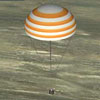
|
 |
NASA selects advanced concepts for study
A space telescope that could resolve weather patterns and continents on Earth-like planets around other stars is among five promising ideas selected for more detailed study by the NASA Institute for Advanced Concepts.
 FULL STORY FULL STORY
 |  |
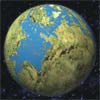
|
 |
Russians to partner with NASA Astrobiology Institute
The Russian Astrobiology Centre will become an affiliate of the NASA Astrobiology Institute through its international partners program. The Institute, headquartered at NASA Ames Research Center in California's Silicon Valley, is leading the scientific study of life in the universe - its origin, evolution, distribution and future.
 FULL STORY FULL STORY
 |  |
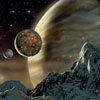
|
 |
NASA hopeful tests can pave way to May launch
NASA managers are hopeful an exhaustive series of upcoming tests will help engineers pin down what caused foam insulation to fall off the shuttle Discovery's external tank during launch last July and, if all goes well, clear the way for another launch next May.
 FULL STORY FULL STORY
 |  |
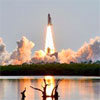
|
 |

Additional coverage for subscribers:
 VIDEO:
FRIDAY'S NEWS BRIEFING DIAL-UP | BROADBAND VIDEO:
FRIDAY'S NEWS BRIEFING DIAL-UP | BROADBAND
 SUBSCRIBE NOW SUBSCRIBE NOW

|
Flight of Chinese astronauts appears to be going well
Now veterans of over three days in space, the two astronauts aboard China's Shenzhou 6 capsule are more than halfway through their anticipated five-day mission after already completing several experiments and key tests of the performance of their spacecraft, which continues to function well.
 FULL STORY FULL STORY
 |  |
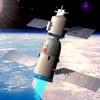
|
 |
New star generation found
NASA's Chandra X-ray Observatory revealed a new generation of stars spawned by a super-massive black hole at the center of the Milky Way galaxy. This novel mode of star formation may solve several mysteries about these super-massive black holes that reside at the centers of nearly all galaxies.
 FULL STORY FULL STORY
 |  |
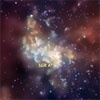
|
 |
Rosetta says more dust than ice in comets
Observations of Comet 9P/Tempel 1 made by ESA's Rosetta spacecraft after the Deep Impact collision suggest that comets are 'icy dirtballs', rather than 'dirty snowballs' as previously believed.
 FULL STORY FULL STORY
 |  |
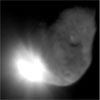
|
 |
Lady in red: Andromeda shines in Spitzer's eyes
NASA's Spitzer Space Telescope has captured a stunning infrared view of Messier 31, the famous spiral galaxy also known as Andromeda. Andromeda is the most-studied galaxy outside our own Milky Way, yet Spitzer's sensitive infrared eyes have detected captivating new features, including bright, aging stars and a spiral arc in the center of the galaxy.
 FULL STORY FULL STORY
 |  |
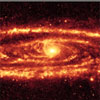
|
 |
Ariane 5 blasts off
An Ariane 5 rocket launched Thursday carrying the French Syracuse 3A military communications satellite and PanAmSat's commercial Galaxy 15 broadcast spacecraft to relay cable television across the U.S. Liftoff from the jungle pad in Kourou, French Guiana, occurred at 2232 GMT (6:32 p.m. EDT). Both satellites were successfully released into orbit.
 MISSION STATUS CENTER MISSION STATUS CENTER
 |  |
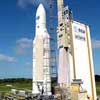
|
 |
Life's building blocks found common in space
A team of NASA exobiology researchers revealed this week organic chemicals that play a crucial role in the chemistry of life are common in space.
 FULL STORY FULL STORY
 |  |
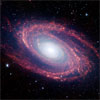
|
 |
X PRIZE, NASA Centennial Challenges teaming
NASA has announced its intent to collaborate with the X PRIZE Foundation on two planned Centennial Challenges prize competitions related to suborbital launch vehicle technology development.
 FULL STORY FULL STORY
 |  |
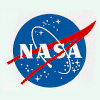
|
 |
China launches second human spaceflight
China took the next bold step in its quest for the high frontier Wednesday when a team of former military pilots blasted into Earth orbit from a desert launch pad to begin five days of intensive experiments and tests that will pave the way for further milestones in space in the coming years.
 FULL STORY FULL STORY
 |  |

|
 |
NASA's experimental sailplane soars like a bird
With the graceful flight of hawks and eagles in mind, NASA aerospace engineer Michael Allen recently hand-launched a 15-pound motorized model sailplane over the Southern California desert. He was hoping it would catch plumes of rising air called thermals.
 FULL STORY FULL STORY
 |  |
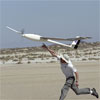
|
 |
Scientists confirm toxic seas during Earth evolution
NASA exobiology researchers confirmed Earth's oceans were once rich in sulfides that would prevent advanced life forms, such as fish and mammals, from thriving. The research was funded in part by NASA's exobiology program.
 FULL STORY FULL STORY
 |  |
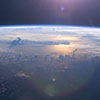
|
 |
Robotic comet explorers could be given new lives
The future may not be empty for a pair of NASA space probes that are wrapping up their primary missions this year, as the agency plans to formally announce the availability of the platforms this fall to gather proposals from the academic and science communities.
 FULL STORY FULL STORY
 STARDUST'S COMET ENCOUNTER STARDUST'S COMET ENCOUNTER
 DEEP IMPACT SHOOTS AT COMET DEEP IMPACT SHOOTS AT COMET
 |  |
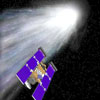
|
 |
Soyuz spacecraft returns ISS crew to Earth
The Expedition 11 commander Sergei Krikalev, flight engineer John Phillips and tourist Greg Olsen left the International Space Station on Monday, riding their Russian Soyuz capsule safely to landing in Kazakhstan.
 MISSION STATUS CENTER MISSION STATUS CENTER
 |  |

|
 |

Additional coverage for subscribers:
 VIDEO:
LANDING TEAMS HELP CREW OUT OF THE CAPSULE PLAY VIDEO:
LANDING TEAMS HELP CREW OUT OF THE CAPSULE PLAY
 VIDEO:
THE SOYUZ CAPSULE UNDOCKS FROM STATION PLAY VIDEO:
THE SOYUZ CAPSULE UNDOCKS FROM STATION PLAY
 VIDEO:
STATION EXTERNAL CAMERA VIEW OF THE UNDOCKING PLAY VIDEO:
STATION EXTERNAL CAMERA VIEW OF THE UNDOCKING PLAY
 VIDEO:
DEPARTING CREW BOARDS THEIR SOYUZ CAPSULE PLAY VIDEO:
DEPARTING CREW BOARDS THEIR SOYUZ CAPSULE PLAY
 VIDEO:
CREWS HOLD CHANGE OF COMMAND CEREMONY PLAY VIDEO:
CREWS HOLD CHANGE OF COMMAND CEREMONY PLAY
 VIDEO:
NARRATED RETROSPECTIVE ON EXPEDITION 11 PLAY VIDEO:
NARRATED RETROSPECTIVE ON EXPEDITION 11 PLAY
 VIDEO:
PRE-LANDING NEWS BRIEFING DIAL-UP | BROADBAND VIDEO:
PRE-LANDING NEWS BRIEFING DIAL-UP | BROADBAND
 MORE: ADDITIONAL SPACE STATION VIDEO MORE: ADDITIONAL SPACE STATION VIDEO
 SUBSCRIBE NOW SUBSCRIBE NOW

|
Saturnian meteorology
There is much to examine in detailed close-ups like this one of Saturn's atmosphere. Scientists are particularly interested in the bright, and in some places turbulent-looking, thin boundary between the large-scale features in the upper half of the image from NASA's Cassini spacecraft.
 FULL STORY FULL STORY
 |  |
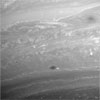
|
 |
OTHER HEADLINES Additional stories today
|
 |
First Spaceway satellite enters service for DIRECTV -- Boeing announced Monday the on-orbit delivery of the Spaceway F1 satellite to DIRECTV, Inc. The most complex commercial satellite ever manufactured, Spaceway F1 will enable DIRECTV to broadcast local high definition television (HDTV) channels into several of the nation's largest markets.

NASA and ZERO-G test space shuttle runway program -- NASA and Zero Gravity Corporation, known as ZERO-G, of Fort Lauderdale, Fla., have announced the firm's participation in a pilot program. It will demonstrate expanded access to and use of the space shuttle's runway and landing facility at NASA's Kennedy Space Center, Fla., for non-NASA activities.

Apollo astronaut Cunningham honored -- NASA has honored former Apollo astronaut Walt Cunningham as an "Ambassador of Exploration." The award provides special recognition for the astronauts of America's early space programs: Mercury, Gemini and Apollo.
|
 |
Russian rocket error dooms ice satellite's launch
A new satellite to help provide insight into one of the more controversial environmental issues being faced today failed to reach orbit to begin its mission to monitor crucial changes in Earth's polar ice caps because its rocket booster's flight computer had a missing command.
 FULL STORY - updated FULL STORY - updated
 |  |

|
 |
Cassini uses its cameras to look at Virgil's moon
When naming features on other worlds, scientists like to follow themes, and Saturn's moon Dione is no exception. Dione possesses numerous features with names from Virgil's "Aeneid." The prominent crater showing a central peak below the center of this image is Dido, a 73-mile crater named after the supposed founder of Carthage.
 FULL STORY FULL STORY
 |  |

|
 |
What's in that cosmic cloud?
Demonstrating the power of a multiwavelength investigation using diverse facilities, astronomers have deciphered the true nature of a mysterious object hiding inside a dark cosmic cloud. They found that the cloud, once thought to be featureless, contains a baby star, or possibly a failed star known as a "brown dwarf," that is still forming within its dusty cocoon.
 FULL STORY FULL STORY
 |  |

|
 |
Reorganization at Kennedy Space Center
NASA's Kennedy Space Center has created four new offices in response to the Exploration Systems Architecture Study, which aims to implement the nation's vision for space exploration.
 FULL STORY FULL STORY
 |  |
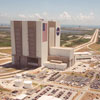
|
 |
OTHER HEADLINES Additional stories today
|
 |
Canada's new Anik F1R satellite enters service -- Telesat's Anik F1R satellite has successfully completed in-orbit tests and has been placed at its orbital slot, from where commercial service has commenced. The satellite was launched last month from the Baikonur Cosmodrome.

Japanese JCSAT-11 satellite to be built by Lockheed Martin -- Lockheed Martin has been awarded a contract by JSAT Corporation of Japan to build its next geostationary telecommunications satellite, designated JCSAT-11. JCSAT-11 will be reserved entirely in orbit as a back up satellite for other JCSAT satellites following its scheduled launch in 2007.
|
 |
Titan's enigmatic bright spot is surface make-up
A 300-mile-wide patch that outshines everything else on Titan at long infrared wavelengths appears not to be a mountain, a cloud or a geologically active hot spot, University of Arizona scientists and Cassini team members say.
 FULL STORY FULL STORY
 |  |
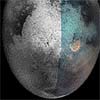
|
 |
Endeavour comes to life
Engineers cheered as electricity coursed through space shuttle Endeavour Thursday for the first time in two years. The powering of Endeavour signaled the end of the orbiter's major modification period at NASA's Kennedy Space Center.
 FULL STORY FULL STORY
 |  |
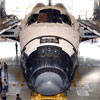
|
 |
Scientists solve 35-year-old cosmic explosion mystery
An international team of scientists using data from a small NASA spacecraft has put into place a large piece of the astronomical puzzle of short-duration gamma-ray bursts.
 FULL STORY FULL STORY
 |  |
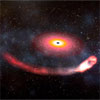
|
 |
Delta 4 grounding shuffles Vandenberg schedule
California's debut launch of the Boeing Delta 4 rocket is facing an extended delay -- perhaps six weeks -- while engineers try to reconcile differing predictions of sloshing fuel inside the booster during flight.
 FULL STORY FULL STORY
 MISSION STATUS CENTER MISSION STATUS CENTER
 |  |
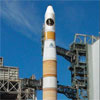
|
 |

Additional coverage for subscribers:
 VIDEO:
ON-PAD ASSEMBLY OF FIRST CALIFORNIA DELTA 4 PLAY VIDEO:
ON-PAD ASSEMBLY OF FIRST CALIFORNIA DELTA 4 PLAY
 MORE: EARLIER DELTA 4 VIDEO MORE: EARLIER DELTA 4 VIDEO
 MORE: SPACE SHUTTLE TESTS ON DELTA 4 PAD MORE: SPACE SHUTTLE TESTS ON DELTA 4 PAD
 SUBSCRIBE NOW SUBSCRIBE NOW

|
New optics produce ultrasharp sunspot images
Advanced technologies now available at the National Science Foundation's Dunn Solar Telescope at Sunspot, New Mexico, are revealing striking details inside sunspots and hint at features remaining to be discovered in solar activity.
 FULL STORY FULL STORY
 |  |
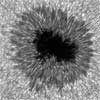
|
 |
Glimpse of faint afterglow of nearby stellar explosion
Intricate wisps of glowing gas float amid a myriad of stars in this image created by combining data from NASA's Hubble Space Telescope and Chandra X-ray Observatory. The gas is a supernova remnant ejected from the explosion of a massive star that occurred some 3,000 years ago.
 FULL STORY FULL STORY
 |  |
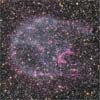
|
 |
Frozen microbes reveal how to test for Martian life
The Arctic Mars Analog Svalbard Expedition is designing devices and techniques to find life on
the Red Planet by using Norway as a test ground. "We tested equipment that we are developing to look for life on Mars and discovered a rare and complex microbial community living in blue ice vents inside a frozen volcano," says the team leader.
 FULL STORY FULL STORY
 |  |

|
 |
Holy Grail of black hole astronomy is within grasp
Common wisdom holds that we can never see a black hole because nothing can escape it - not even light. Fortunately, black holes aren't completely black. Within a few years, astronomers believe they will be able to peer close to the horizon of the black hole at the center of the Milky Way.
 FULL STORY FULL STORY
 |  |

|
 |
Gravity Probe B mission completes data collection
Almost 90 years after Albert Einstein first postulated his general theory of relativity, scientists have finished collecting data to put it to a new, different kind of experimental test.
 FULL STORY FULL STORY
 |  |
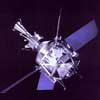
|
 |
OTHER HEADLINES Additional stories today
|
 |
NASA's lunar lander development team picked -- NASA's Marshall Space Flight Center and Goddard Space Flight Center has been selected to lead a team in the development of a lunar lander spacecraft. The lander is tentatively planned for launch as early as 2010.

Howell leaving NASA's Johnson Space Center -- Jefferson Davis Howell, Jr., is leaving his position as director of NASA's Johnson Space Center to join the University of Texas, Austin. NASA has initiated a search for a successor, and Howell will stay on until a replacement is named.
|
 |
California Delta 4 pad once hosted the space shuttle
Boeing's Delta 4 rocket pad at Vandenberg Air Force Base was renovated in recent years, transforming Space Launch Complex-6 from the West Coast space shuttle launch site into a facility for the next-generation unmanned booster. This collection of footage shows the 1985 launch pad test using NASA's orbiter Enterprise.
 |  |
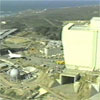
|
 |

Additional coverage for subscribers:
 VIDEO:
SOLID ROCKET BOOSTERS STACKED ON THE PAD PLAY VIDEO:
SOLID ROCKET BOOSTERS STACKED ON THE PAD PLAY
 VIDEO:
EXTERNAL FUEL TANK MATED TO THE BOOSTERS PLAY VIDEO:
EXTERNAL FUEL TANK MATED TO THE BOOSTERS PLAY
 VIDEO:
SHUTTLE ENTERPRISE ATTACHED PLAY VIDEO:
SHUTTLE ENTERPRISE ATTACHED PLAY
 SUBSCRIBE NOW SUBSCRIBE NOW

|
Windy weather could scrub Monday's Delta 4 launch
The inaugural California launch of Boeing's Delta 4 rocket carrying a classified spy satellite is scheduled for Monday from Vandenberg Air Force Base. However, a dismal weather forecast calling for extremely windy conditions could delay the liftoff.
 MISSION STATUS CENTER - updates MISSION STATUS CENTER - updates
 LAUNCH EVENTS TIMELINE LAUNCH EVENTS TIMELINE
 GROUND TRACK MAP GROUND TRACK MAP
 |  |
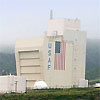
|
 |
|
Read our earlier news archive page.
|



